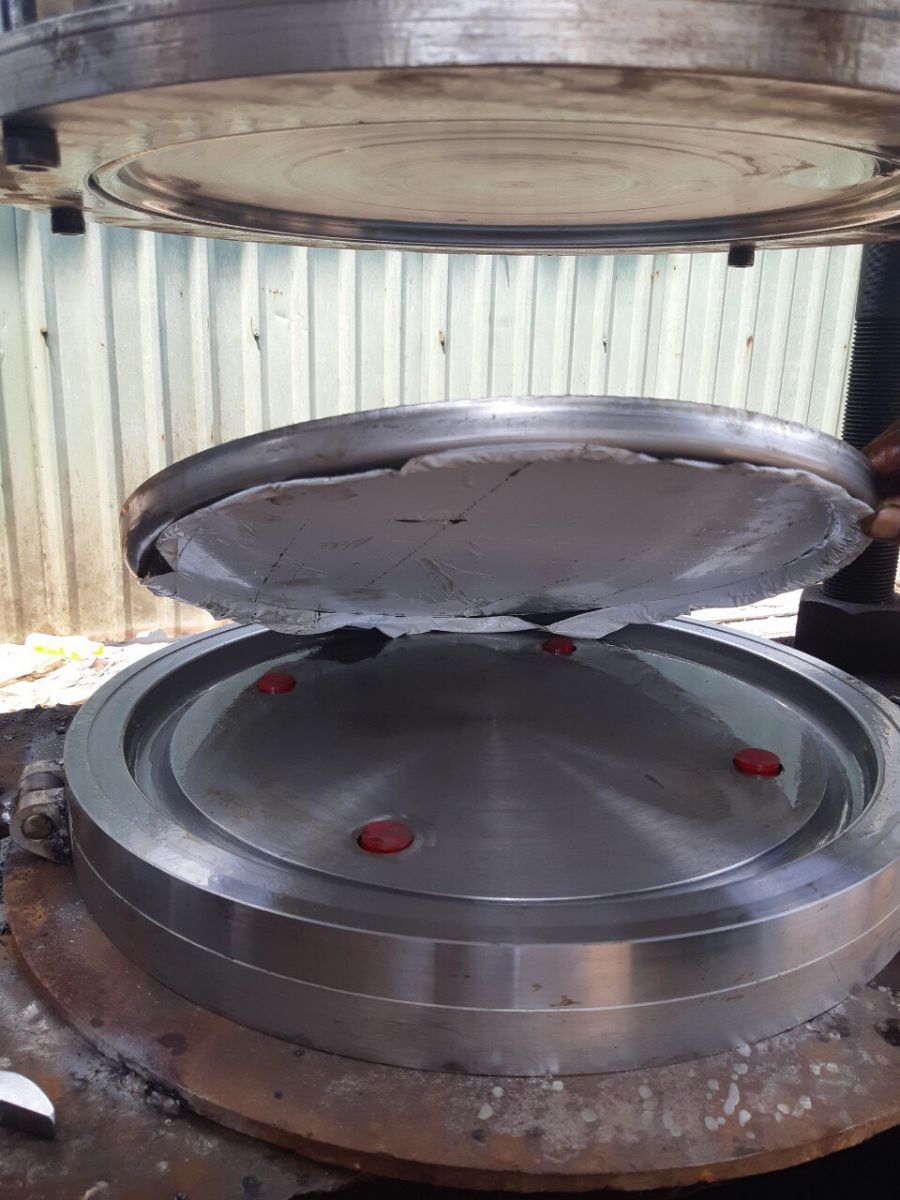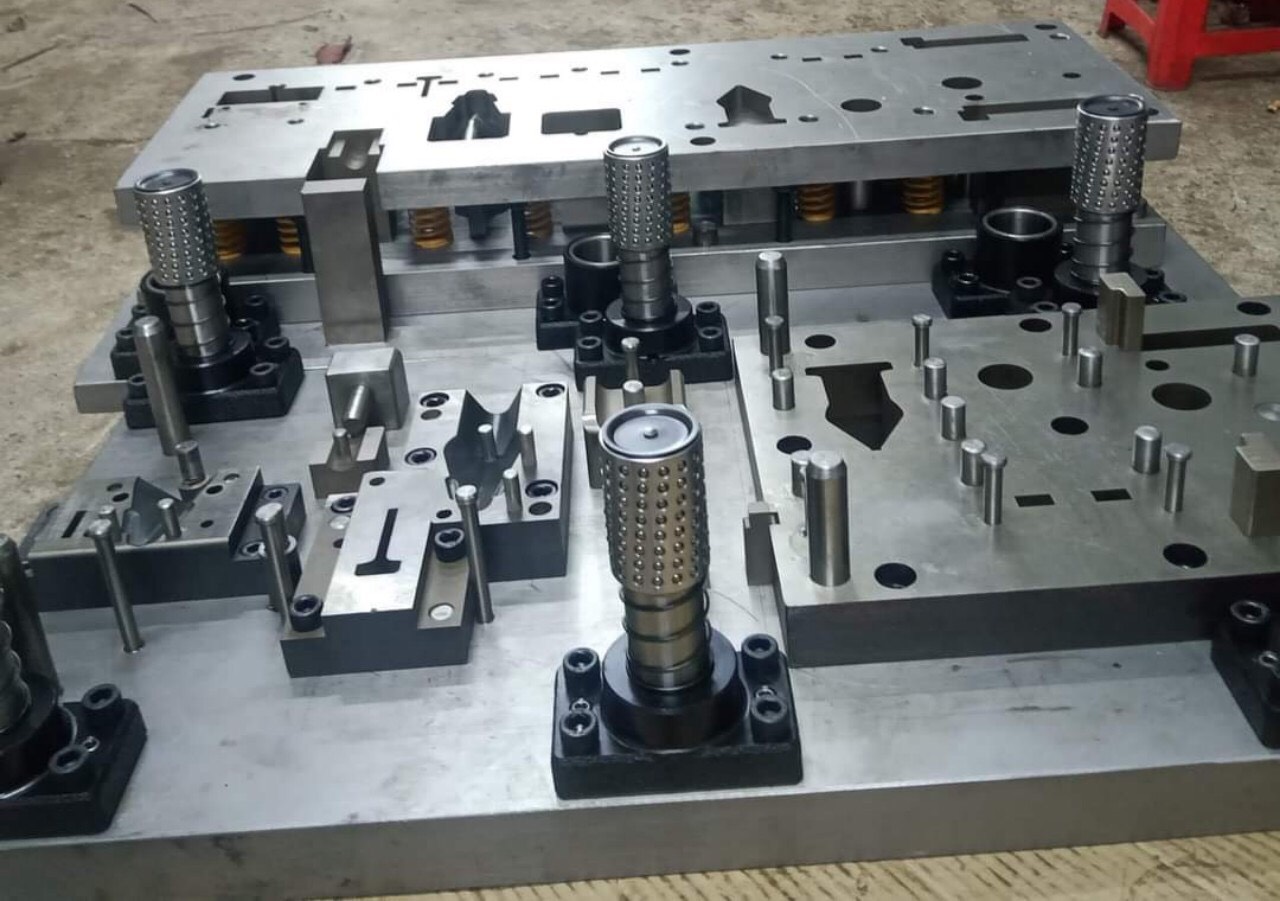Tin Tức
Tool And Die Making | Technology - Processes - Benefits
Tool And Die Making | Technology - Processes - Benefits
Tool and die making is a specialized field within manufacturing that involves the design, creation, and maintenance of tools, dies, and molds used in production processes across various industries. Tool and die makers utilize their expertise in precision machining and metalworking to produce highly accurate and complex tools for manufacturing components.

Key aspects and processes involved in tool and die making
Design: Tool and die making begins with the design phase, where skilled designers and engineers use computer-aided design (CAD) software to create detailed blueprints and specifications for the required tools or dies. This phase involves careful consideration of the specific requirements and dimensions of the intended part.
Material Selection: The selection of appropriate materials is crucial for ensuring the durability and functionality of the tools and dies. Tool and die makers often work with various types of high-strength steel, carbides, and other specialized materials based on the requirements of the production process.
Precision Machining: Once the design is finalized and the materials are selected, precision machining processes such as milling, turning, drilling, and grinding are employed to shape and form the components according to the specifications outlined in the design phase. CNC (Computer Numerical Control) machines are commonly used to achieve the required levels of precision and accuracy.
Heat Treatment: Some tool and die components require heat treatment processes to enhance their strength, durability, and wear resistance. Heat treatment techniques such as hardening, tempering, and annealing are applied to improve the overall performance and lifespan of the tools and dies.
Assembly and Finishing: After the individual components are machined and heat-treated, they are assembled to create the final tool or die. This phase may involve welding, fastening, or other joining processes to ensure the structural integrity of the tool. Additionally, finishing processes like polishing and coating may be applied to improve the surface quality and durability.
Quality Control: Stringent quality control measures are implemented throughout the entire tool and die making process to verify that the components meet the required specifications. This may involve the use of precise measurement tools, such as coordinate measuring machines (CMMs), to ensure dimensional accuracy and adherence to tolerances.
Tool and die making is a highly specialized and intricate process that requires a skilled workforce, advanced machinery, and strict adherence to quality standards to produce the precise and durable tools necessary for various manufacturing operations.

Technology Tool and die
In the tool and die industry, various technological advancements have significantly enhanced the design, production, and maintenance of tools and dies. These technological tools and innovations have improved the overall efficiency, precision, and quality of manufacturing processes. Here are some of the key technologies commonly utilized in the tool and die industry:
Computer-Aided Design (CAD): CAD software is extensively used in the tool and die industry for creating detailed 2D and 3D models of tools, dies, and molds. It allows designers and engineers to visualize and simulate designs, enabling them to make necessary adjustments and improvements before manufacturing begins.
Computer-Aided Manufacturing (CAM): CAM software is utilized to generate toolpath and machining instructions for CNC machines, ensuring precise and efficient manufacturing processes. CAM software works in conjunction with CAD systems to facilitate the seamless transition from design to production.
CNC Machining: Computer Numerical Control (CNC) machines play a vital role in the tool and die industry, enabling the precise and automated machining of various components. CNC machining offers high levels of accuracy and repeatability, allowing for the production of complex and intricate tool and die parts.
Wire Electrical Discharge Machining (EDM): Wire EDM technology is employed for cutting intricate shapes and profiles in hard materials. It utilizes electrical discharges between a wire electrode and the workpiece to erode the material, allowing for precise and intricate cuts in hardened metals.
High-Speed Machining (HSM): High-speed machining technology involves the use of cutting tools and CNC machines capable of operating at significantly higher speeds, resulting in faster production and improved surface finishes. HSM enables the efficient machining of complex geometries and reduces cycle times.
3D Printing/Additive Manufacturing: Additive manufacturing technologies, including 3D printing, have found application in the tool and die industry for rapid prototyping and the production of complex geometries. These technologies offer increased design flexibility and can be used to create intricate components with reduced material waste.
Simulation Software: Simulation software is used to simulate and analyze the performance of tools and dies before they are manufactured. It helps in identifying potential issues, optimizing designs, and ensuring the efficiency and functionality of the final products.
Integration of these advanced technologies has revolutionized the tool and die industry, allowing for the production of highly precise, complex, and durable tools and dies that meet the stringent demands of modern manufacturing processes.
Processes Tool and die
Tool and die manufacturing involves various intricate processes aimed at producing precise and durable tools, dies, and molds used in manufacturing operations. These processes require expertise in design, machining, and quality control to ensure the efficient production of high-quality components. Here are some of the key processes involved in tool and die manufacturing:
Design and Engineering: The process begins with the design and engineering phase, where skilled designers and engineers use CAD software to create detailed blueprints and specifications for the required tools or dies. This phase involves careful consideration of the specific requirements and dimensions of the intended part.
Material Selection: Selecting the appropriate materials is crucial for ensuring the durability and functionality of the tools and dies. Tool and die makers often work with various types of high-strength steel, carbides, and other specialized materials based on the requirements of the production process.
Machining and Fabrication: Precision machining processes such as milling, turning, drilling, and grinding are used to shape and form the components according to the specifications outlined in the design phase. CNC machines are commonly used to achieve the required levels of precision and accuracy.
Heat Treatment: Some tool and die components require heat treatment processes to enhance their strength, durability, and wear resistance. Heat treatment techniques such as hardening, tempering, and annealing are applied to improve the overall performance and lifespan of the tools and dies.
Assembly and Finishing: After the individual components are machined and heat-treated, they are assembled to create the final tool or die. This phase may involve welding, fastening, or other joining processes to ensure the structural integrity of the tool. Additionally, finishing processes like polishing and coating may be applied to improve the surface quality and durability.
Quality Control: Stringent quality control measures are implemented throughout the entire tool and die manufacturing process to verify that the components meet the required specifications. This may involve the use of precise measurement tools, such as coordinate measuring machines (CMMs), to ensure dimensional accuracy and adherence to tolerances.
Testing and Validation: Final testing and validation processes are conducted to ensure that the tools and dies meet the performance standards and requirements. This includes assessing the functionality, durability, and overall performance of the tools and dies under various operating conditions.
By integrating these processes effectively, tool and die manufacturers can produce high-quality, precision-engineered tools and dies that meet the specific needs of various manufacturing industries.
Benefits Tool and die
The tool and die manufacturing process plays a crucial role in various industries, offering a multitude of benefits that contribute to the overall efficiency, precision, and quality of production. Here are some key benefits of tool and die manufacturing:
Precision and Accuracy: Tool and die manufacturing ensures the production of highly precise and accurate components, critical for the manufacture of complex and intricate parts used in various industries, such as automotive, aerospace, and electronics.
Customization and Versatility: Tool and die manufacturing allows for the creation of custom-designed tools and dies tailored to the specific requirements of the production process. This level of customization and versatility enables the production of diverse components with varying complexities.
Efficient Production: The use of advanced machining techniques and technologies in tool and die manufacturing facilitates efficient and streamlined production processes. This leads to increased productivity, reduced lead times, and optimized manufacturing operations.
Durability and Longevity: Tools and dies manufactured through this process are engineered to be highly durable and long-lasting, capable of withstanding the rigors of repetitive use in demanding manufacturing environments, thereby reducing the need for frequent replacements.
Cost-Effectiveness: While the initial investment in tool and die manufacturing may be significant, the long-term cost savings are substantial. High-quality tools and dies result in reduced downtime, minimal material waste, and enhanced production efficiency, leading to overall cost-effectiveness.
Quality Assurance: Stringent quality control measures and testing protocols ensure that the manufactured tools and dies meet the highest quality standards. This guarantees that the produced components comply with the specified tolerances and performance criteria, minimizing the risk of defects and rejections.
Innovation and Development: Tool and die manufacturing encourages innovation and the development of advanced techniques and processes, leading to the creation of cutting-edge tools and dies that can accommodate the evolving needs and demands of modern industries.
By leveraging the benefits of tool and die manufacturing, industries can enhance their manufacturing capabilities, improve product quality, and remain competitive in today's dynamic and demanding market landscape.

TRI VIET MECHANICAL - ELECTRICAL CO., LTD - With the motto: "Adding value together with you" - Tri Viet Electric is pleased to welcome and cooperate with all customers in the future.
Address: III-14 Street No. 13, Tan Binh Industrial Park, Tan Phu District, HCMC
Hotline: 0908.286.507
Email: uttn066@yahoo.com.vn
Website: http://khuondap.vn/
Bài viết khác:
Tìm Hiểu Về Vai Trò Của Chế Tạo Khuôn Dập Trong Đời Sống
Tìm Hiểu Về Nguyên Lý Làm Việc Của Khuôn Dập Liên Hợp
Xưởng Chế Tạo Khuôn Dập Mẫu Chất Lượng
Tìm Hiểu Về Khuôn Dập Liên Hoàn Chất Lượng | Công Ty Cơ Khí Điện Trí Việt
Các bài viết khác
- Đặc Tính Ứng Dụng Của Khuôn Dập Liên Hoàn - Khuôn Dập Liên Tục
- Khuôn Đột Dập
- Công Ty Khuôn Dập Liên Hoàn Theo Yêu Cầu
- Gia Công Sản Phẩm Dập Tấm | Trí Việt
- Khuôn Dập Nguội
- Khuôn Dập Vuốt Là Gì ? Cấu Tạo Và Đặc Điểm
- Nhận Đột Dập Kim Loại Giá Rẻ
- Kinh Nghiệm Thiết Kế Khuôn Dập - Chế Tạo Khuôn Dập
- Khuôn Đột Dập Liên Hoàn Trí Việt
- Thiết Kế, Sản Xuất Và Bảo Trì Khuôn Dập Liên Hoàn







